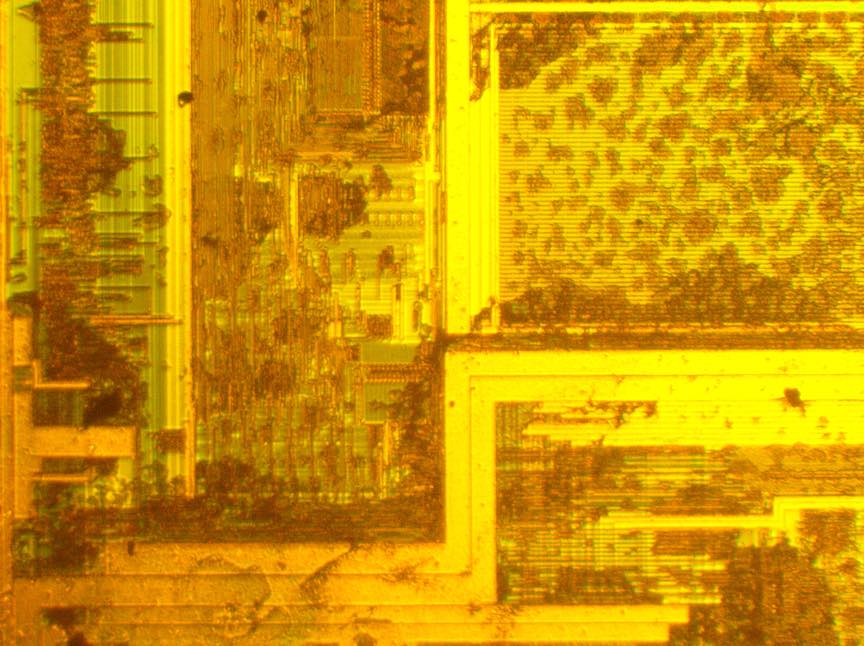 Recover Microcontroller ATmega261 Heximal
Recover Microcontroller ATmega261 Heximal
Recover Microcontroller ATmega261 Heximal from embedded flash memory, the mcu atmega261 will be unlocked by focus ion beam and locked code can be extracted from atmega261 memory;

If a write is performed to any of the five Timer/Counter2 Registers while its update busy flag is set, the updated value might get corrupted and cause an unintentional interrupt to occur.
The mechanisms for reading TCNT2, OCR2A, OCR2B, TCCR2A and TCCR2B are different. When reading TCNT2, the actual timer value is read. When reading OCR2A, OCR2B, TCCR2A and TCCR2B the value in the temporary storage register is read when breaking pic12f617 microcontroller.
When Timer/Counter2 operates asynchronously, some considerations must be taken. Warning: When switching between asynchronous and synchronous clocking of Timer/Counter2, the Timer Registers TCNT2, OCR2x, and TCCR2x might be corrupted.
A safe procedure for switching clock source is:
Disable the Timer/Counter2 interrupts by clearing OCIE2x and TOIE2.
Select clock source by setting AS2 as appropriate.
Write new values to TCNT2, OCR2x, and TCCR2x.
To switch to asynchronous operation: Wait for TCN2UB, OCR2xUB, and TCR2xUB.
Clear the Timer/Counter2 Interrupt Flags.
Enable interrupts, if needed.
The CPU main clock frequency must be more than four times the Oscillator frequency.
When writing to one of the registers TCNT2, OCR2x, or TCCR2x, the value is transferred to a temporary register, and latched after two positive edges on TOSC1.
The user should not write a new value before the contents of the temporary register have been transferred to its destination. Each of the five mentioned registers have their individual temporary register, which means that e.g. writing to TCNT2 does not disturb an OCR2x write in progress when Reverse engineering pic16hv610 microcontroller program.
To detect that a transfer to the destination register has taken place, the Asynchronous Status Register – ASSR has been implemented. When entering Power-save or ADC Noise Reduction mode after having written to TCNT2, OCR2x, or TCCR2x, the user must wait until the written register has been updated if Timer/Counter2 is used to wake up the device. Otherwise, the MICROCONTROLLER will enter sleep mode before the changes are effective.
This is particularly important if any of the Output Compare2 interrupt is used to wake up the device, since the Output Compare function is disabled during writing to OCR2x or TCNT2. If the write cycle is not finished, and the MICROCONTROLLER enters sleep mode before the corresponding OCR2xUB bit returns to zero, the device will never receive a compare match interrupt, and the MICROCONTROLLER will not wake up.